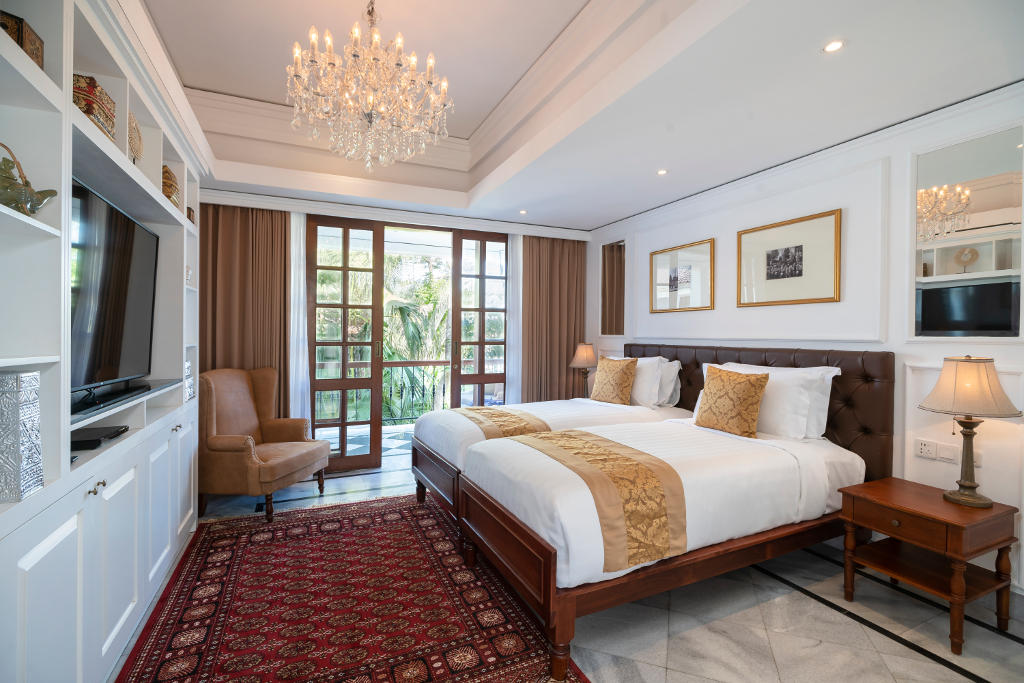While staying at The Colony Hotel and exploring Bali, you would have seen or heard – whether at a performance or in passing – the magical music of the gamelan.

Image by Benjamin Hollis on Flickr
It is hard to describe such a mesmerizing, unique and dynamic sound but especially to the unfamiliar ear, the beautiful melodies made by the gamelan will stop anyone in their tracks. It’s not a tune that is easily forgotten – a harmonious and impeccable, beautifully orchestrated mixture of shimmering gongs, trills and tinkles with a powerful and exciting rhythm that flows and ebbs like the waves.
It’s a beautiful sound with a slightly mystical and eerie quality, usually used to accompany rituals, ceremonies, weddings, significant events and traditional performances.
What Is The Gamelan?
According to UNESCO, the gamelan refers to the traditional Indonesian percussion orchestra and the set of musical instruments used, which consists primarily of ornate, percussive instruments made of hand-forged metal. The ensemble typically includes xylophones, gongs in several sizes, gong chimes, drums, cymbals, string instruments and bamboo flutes.
Meanwhile, Bates College describes the gamelan as a traditional Indonesian musical ensemble, a percussion orchestra composed predominantly of tuned gongs of various types and metal-keyed instruments conducted by a drummer, and often includes voice bamboo flute, xylophone, and stringed instruments.
What Does The Gamelan Sound Like?

Image by Nicolaus Erwin from Pixabay
Just like everything else in Indonesia, the gamelan differs in style and sound according to region. The Balinese gamelan sounds distinctively and significantly different from the Javanese gamelan. The Balinese gamelan is intense, vigorous and exciting, while the Javanese gamelan is lighter, softer and induces a feeling of calm.
Each has its own unique rhythm and style but regardless of district or region, the gamelan is an undeniable part of Indonesian culture, a proud heritage that is passed down from generation to generation. Here in Bali, young boys begin practicing the gamelan at a young age. Each village will have its own gamelan band called beleganjur – which means “gamelan of walking warriors.” They practice regularly, usually after dinner or after the sun sets in the village Banjar.
Here in Seminyak, it’s not uncommon to hear the hypnotic sounds of the gamelan at night as you wander the streets. If you do hear the melodious tunes being played, feel free to follow the sound until you come to its source where you can observe and immerse in the music from a respectful distance.
To create the irresistibly haunting tunes produced by the Balinese gamelan, the gongs, drums, gong chimes and other instruments within the orchestra would be struck in unison and in alternation with wooden mallets to produce a layered, magical and metallic, rhythmic and energetic melody with a bright, pulsating, percussive quality.
Where Can You See Gamelan In Bali

Photo by Peter George on Unsplash
Don’t miss out on the opportunity to watch a gamelan performance while you’re here in Bali. Many traditional performances are accompanied by the gamelan such as the Legong dance, the Topeng (masked) dance or the Barong dance. The question is, where can you go for a night of breathtaking Balinese culture and performances accompanied by enthralling gamelan music?
Here are some suggestions.
Ubud
As the epicenter of Balinese art and culture, Ubud is the right place to be if you’re looking to immerse in traditional Balinese performances. There are nightly local productions in almost every street and major landmarks in Ubud including the Ubud Palace, Agung Rai Museum Of Art, Balerung Stage Peliatan, Tamansari Temple and in a number of locations surrounding the Monkey Forest. You won’t have to search high and low for these performances; staff of the palace or representatives of the Banjars will be present at all major tourist locations, with tickets available for purchase. Ubud is located approximately 1 hour and 30 minutes from The Colony Hotel Bali by car.
Denpasar
An enchanting Barong Dance performance accompanied by gamelan is also available at the Sari Wisata Budaya Stage in Tanah Kilap, situated in the vibrant region of Pemongan, Denpasar. Nestled within the southern tourist area of Bali, Tanah Kilap Pemogan is a convenient choice for visitors seeking to witness this captivating cultural spectacle without venturing too far from their hotels. The Bali Barong Tanah Kilap Pemogan Dance Show is available daily from 9 am to 10.30 am, promising a memorable and immersive experience of Balinese traditional arts. It’s easily accessible and is only a 30 minutes drive from The Colony Hotel Bali.
GWK Cultural Park
This is a great option for those who want to spend a day soaking in the cultures of Bali. Located in Ungasan, approximately 40 minutes from The Colony Hotel Bali, the GWK Cultural Park is a sprawling complex where traditional performances and shows are held. It also comes with two restaurants, a cinema, shops and an art market, a lotus garden and a giant statue of Lord Wisnu. From 10 am onwards, you can enjoy a variety of dances that are all accompanied by the gamelan, including Bumbung Dance, Barong Keris Dance, and the Garuda Wisnu Ballet.
Enjoy A Balinese Cultural Gamelan Experience

Now that you know all about the Indonesian gamelan, it’s time to experience it all with your loved ones. Located in the heart of Seminyak, all of the places above are easily reachable from The Colony Hotel Bali whether by car or motorbike. Our concierge team will be more than happy to help you arrange for transportation and tickets to your Balinese cultural gamelan experience.
Book your stay now with The Colony Hotel for a truly unforgettable experience with prices starting from IDR 1,500,000 per night*.
